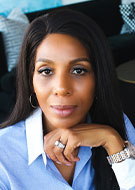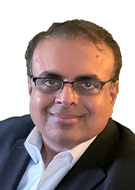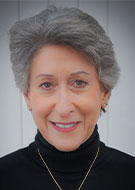Plotting an Unconventional Career Path
Radiologists seek to increase impact, find greater fulfilment



Radiologists might consider diverse career opportunities, including moving to industry; seeking roles in diversity, equity and inclusion; heading to academic leadership; or pivoting to corporate governance.
A recent RSNA webinar, “Uncovering Novel Pathways for Your Career,” explored why and how some physicians, including radiologists, have transitioned into alternative clinical or non-clinical roles that provide them with the opportunity to apply transferable skills in different ways.
“As physicians, we are dynamic and have so many interests, talents and gifts that we want to share with others. And I think we’re beginning to realize, due to increased exposure, that our gifts are also transferable to aspects of other industries,” said Teresa D. Malcolm, MD, MBA, vice president of diversity, equity, inclusion, and belonging at Dartmouth Health in NH. “There are other ways for us to showcase our expertise that can be very fulfilling.”
Dr. Malcolm started her career as an OBGYN and became a physician executive before she moved to Dartmouth Health. She is also the associate program director of the Leadership Certification Program, ELEVATE, at the American Medical Women's Association.
Some physicians, including radiologists, are learning that in roles adjacent to clinical work, they can achieve greater alignment with their professional goals.
For Khan Siddiqui, MD, chief medical officer and chief strategy officer at Hyperfine, a company working to produce the world’s first portable MRI scanner, his professional goal has always been to make imaging more accessible for patients on a global scale. Once he was clear on this goal and pursued it, he encountered opportunities that aligned with his goal.
“During my initial clinical work and research, my IT and software background kept pushing me toward informatics,” Dr. Siddiqui said. “I realized there should be a training program for informatics, which eventually led me to help start the first program in the country, at UC Maryland. Then, Microsoft recruited me to start their first health care AI team. For me, everything was an extension of wanting to provide care at a massive scale.”
“As physicians, we’re taught to constantly ask questions, do research and seek answers, especially during patient care. However, if we took that same concept and applied it to our careers—especially if we feel like we’re missing something or are yearning for more—then we might find our next career path or at least start heading in the right direction.”
JOYCE D. CHERTOFF, MD
Alternate Path May Take a Circuitous Route
For radiologists who might be interested in alternative career opportunities but may not know where to start, Dr. Malcolm advises that a career change may not follow a linear path like that of medical training. Her own journey involved many steps forward and backward to upskill and fill gaps.
“My shift was clunky. In terms of becoming a physician executive, I didn't even know what a physician executive was,” Dr. Malcolm said. “When I became an attending, I had a lot of questions about how things worked. I received feedback that pointed me to how I could learn about the business side of medicine. That's what really encouraged me to go back to school to get my MBA.”
Jocelyn D. Chertoff, MD, chair of the Department of Radiology at Dartmouth Hitchcock Medical Center, NH, and a member of the Board of Directors of Varex Imaging Corporation, shared that becoming aware of valued skills that came easily to her, but not necessarily to others, was an important part of her career transition.
“I learned that there are skills that I didn't consider to be skills, like running a meeting,” Dr. Chertoff said. “I didn't know that was a skill. I thought everybody could run a meeting.”
Dr. Chertoff also advises potential career-changers to be open and say “yes” to as many opportunities as possible—committees, meetings, initiatives—rather than following a prescriptive career path.
“Being open has led me into all kinds of interesting things, people and ideas. I've never regretted saying yes to anything. Even things that I didn't particularly like. Sometimes those things led to opportunities to get involved in something I did like, or I learned something new,” Dr. Chertoff said.
As she changed careers, Dr. Malcolm found it useful to assemble a circle of people she could turn to for guidance, feedback and leverage. She calls this her own personal board of directors and says that ideally it should include a mentor, to advise you, a sponsor to act for you and a coach to listen to you. This group could also include a peer and a mentee, both offering unique perspectives from different career stages.
“A CEO of a company reports to a governing board, a group of people who are helping that CEO with strategic decision making. They are guiding the CEO and holding them accountable to the company’s goals,” Dr. Malcolm said. “A personal board of directors can hold you accountable to your professional goals, while giving you advice, promoting you to others, listening to you, providing constructive feedback and inspiring you.”
Opportunity to Make A Greater Impact
Career changes can allow radiologists to make a greater impact than they could have if they had remained solely in clinical work.
Dr. Chertoff enjoys connecting the work of her home institution with the work she does in national societies and organizations, as she now has time to be involved in both.
“I get inspired by things happening in my home institution that I take to society meetings, and I also bring things from meetings back home in a really positive way,” Dr. Chertoff said. “I have the chance to experience the impact as well as participate in creating an impact.”
For Dr. Siddiqui in his current role at Hyperfine, greater impact means being able to work on both the bigger picture and its tiny details.
“The requirements of an imaging device that will work in both high and low resource settings make the work very complex,” Dr. Siddiqui said. “At the same time, I envision that the work we're doing will create a huge impact in access to imaging globally.”
Dr. Malcolm says that her leadership work has enabled her to improve patients’ lives on a systems level.
“When I started to be directly involved in changing, redesigning and implementing processes in systems, I saw that these processes were really helping patients improve their lives and be healthier,” she said.
Ultimately, pivoting in a different direction can be beneficial to the radiologist and lead to career longevity.
“As physicians, we’re taught to constantly ask questions, do research and seek answers, especially during patient care,” Dr. Chertoff said. “However, if we took that same concept and applied it to our careers—especially if we feel like we’re missing something or are yearning for more—then we might find our next career path or at least start heading in the right direction.”
For More Information
Access the RSNA webinar, “Uncovering Novel Pathways for Your Career.”
Find more tips in the Non-traditional Career Pathways infographic.